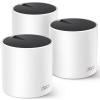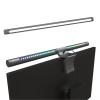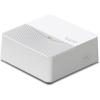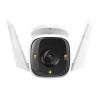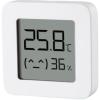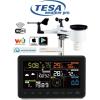We’re now in the age of Smart Home Automation – powered by the Internet of Things – and what a time to be alive. As new smart technology continues to emerge, we’re seeing the way we go about our daily lives change before our very eyes. You can change the mood of a room with a simple voice command that cues ambient lighting, romantic music, and even turns the cameras off if it’s that type of mood. And even if you live alone, you can arrive home to vacuumed floors and freshly cooked rice, thanks to your beloved smart home appliances.
Perhaps one of the best things about the rise of smart home automation is that it’s actually pretty affordable, making it more accessible to the average person! If you’re looking to build a truly smart and connected home, this guide is just for you. We take a look at some of the best categories to begin when venturing into the world of smart home automation. But first, let’s meet the smart assistants.
Decide on a Smart Assistant
If you’re serious about building a smart and connected home, deciding on a smart assistant is the best place to start. They offer a convenient way for you to interact with various smart devices without juggling multiple apps. Most smart devices are compatible with multiple assistants, but on the off chance it isn’t, it always pays to check.
If you have a smartphone, it’s likely you already have a smart assistant, and you might want to stick with the same one. If you’re on Android, you’ll have a Google Assistant or even Alexa built-in. If you’re an iPhone user, you’ll have Siri. Alternatively, you might want to choose a separate smart assistant for your home that’s based on compatibility or intelligence. More on smart assistants here.
For those wanting to build an Apple-based ecosystem, you'll likely want to pick up an Apple HomeKit or Apple HomePod. Otherwise, a Google Assistant or Amazon Alexa are the two other choices. If you're looking to have a fully integrated smart home as soon as possible, you'll want to keep in mind that Google Assistant currently has the best integration across devices, while Apple currently has the least (though this growing).
Smart Hubs
Smart Hubs are the centralised component of a truly smart and connected home. They act as the ‘master controller’ for your smart devices, making it easy for them all to work together. A smart hub lets you connect multiple smart devices – that otherwise might not be compatible – and have them perform coordinated routines with each other. For example, when you leave the house, a Smart Hub can tell your lights to turn off, your locks to shut, and your surveillance cameras to start running. Or when your scheduled smart lights turn on in the morning, the Smart Hub can tell the kettle to start boiling.


If you’re on team Alexa, there’s the Amazon Echo Hub; the Apple HomeKit for those sticking with the Apple eco-system; and the Google Nest Hub for Google Assistant. There are also third-party Smart Hubs that are compatible with multiple voice assistants. These devices - such as the Google Nest Hub - does more than keeping your smart devices connected. With a touch display, you can watch YouTube videos and your favourite Netflix shows on it. And if kept by your bedside, it has additional smart features of its own, such as Sleep Sensing which can track when you go to bed, when you wake up, and how long you’ve slept.
Smart Speakers


If you're not yet ready for a Smart Hub or want to further expand the reach of your Smart Assistant, a smart speaker is the next addition to look at. The ability to control your smart home devices with a simple voice command makes them even better, and that’s where smart speakers come in. You merely have to speak commands to your gadgets for them to do your bidding. Turning off the lights becomes as simple as saying, “Turn off the lights”. There’s more to them than that though. Smart speakers can also tell you the news and weather, answer questions, provide traffic updates, play music, or even order an Uber.
There are plenty of Smart Speakers on the market, with leading audio brands even jumping in to include smart assistants on their speakers, such as those from JBL and Sony. The first step to choosing a smart speaker is considering which Smart Assistant you decided on, and researching your options based on that. The most popular smart speakers include the Amazon Echo and Google Nest range of products; though many Apple users will find that the Apple HomePod range is best for them. If having the best sound is your top priority, you might want to consider JBL speakers which is compatible with Google Assistant.
Choose a router that’s fit for the job
Your router has the important task of connecting all of your smart home devices, so you want to make sure you have one that’s fit for the job. Unfortunately, routers provided by ISP providers generally won’t cut it, and if this is the case for you, shopping for a new router should be a top priority if you want a seamless smart home experience. When shopping for a router for your smart home, there are three minimum requirements to keep an eye out for:
- 802.11ac Wave 2 (or better) – This wireless standard enables MU-MIMO which allows your router to communicate with multiple devices simultaneously. Resultingly, the wait time for a signal to each device decreases and the speed of your network increases.
- Dual-Band Radio (or better) – This gives you the ability to connect to two different networks (either 2.4GHz or 5.0GHz), which allows for faster speeds and flexibility. Plus, some smart home devices will only connect to a specific band so if you only have a single band router, you may be unable to connect these devices. Some routers even offer Tri-Band Radio which may be worth considering if you’ll have a lot of users on your network.
- 1200MBps Speed (or better) – This represents the speed of the 2.4GHz band and the 5.0GHz band combined. Ultimately, the speeds you experience will depend on your internet plan, the number of users, and your home environment, but a minimum speed rating of 1200MBps is good to shoot for to have minimal to no interruptions.
Optional: Mesh Wi-Fi for large homes or dead spots
If you have a large home or experience ‘dead spots’ in certain areas, you should consider a Mesh Wi-Fi router. A Mesh Wi-Fi system adds satellites around your home to broaden the coverage of your Wi-Fi, blanketing your home in smooth, reliable Wi-Fi. The more satellites you add, the stronger and better your Wi-Fi becomes.
Optional: Wi-Fi 6 to future proof your smart home
Wi-Fi 6 is the future of Wi-Fi. It’s a more recent version of 802.11ac, known as 802.11ax, that offers faster connections, improved performance, lower latencies, and wider network coverage. At the time of this article, devices that support Wi-Fi 6 are limited, but you can expect support to broaden over the coming years. While Wi-Fi 6 isn’t necessary for a smart home, purchasing a Wi-Fi 6 router now will future proof your smart home for faster speeds and improved performance down the line.
Smart Lighting


Smart lighting is the first place a lot of people start. It’s really just as simple as changing a light bulb and the satisfaction goes well beyond that. Most smart bulbs work perfectly well without a central hub and can be controlled via apps. The exact features available depend on the Smart Bulb, but they generally give you the ability to schedule your lights, or manually turn them on and off from your phone; dim the lights; adjust the colour temperature; and if you’ve got an RGB Smart Bulb, you can even change the colour and make them strobe. If you want the benefit of controlling your lights with a simple voice command, you’ll definitely want to pair it with a Smart Assistant. What makes smart lights even better, is they can lower your electricity bill. All smart lights are LEDs, which consume far less electricity than incandescent and even fluorescent bulbs.
Smart Doorbell


Smart video doorbells let you take a peek at what’s happening on your doorstep without opening the door. When the doorbell is pressed or the built-in motion sensor is triggered, you’ll receive a notification directly to your phone, tablet, or laptop. With video and audio streaming directly to your device, you can let visitors know you’ll be down in a minute; tell delivery drivers where to leave a package; avoid pushy salespeople, or catch package thieves and other pesky criminals in the act. Some video doorbells such as those by RING, even have a built-in siren which you can sound to chase unwanted visitors away. Smart video doorbells are a great addition to the smart home, and add a layer of security to your front door. For some help choosing the best video doorbell, head over here to see the Top Video Doorbells.
Smart Door Locks


Smart locks are one of the best entry points into a smart, connected, and secure home – literally. Let’s be honest - keys are somewhat outdated. They can easily be picked by anyone who is well-practiced, and they can easily be lost too. Not to mention the convenience and benefits they’re lacking in comparison to the modern smart lock, such as providing easy access to multiple people; notifications when the door is unlocked or locked; the ability to manage and restrict access from your phone; and peace of mind. PB Tech sells three popular brands of Smart Locks: Lockly, Yale, and Schlage. Different smart locks will not only have different features, but also different requirements, so you’ll want to keep that in mind when shopping too.
Smart Cameras & Surveillance


Smart security cameras give you peace of mind, allowing you to keep an eye on your house from your phone, tablet, or laptop. They often have additional features that can help catch criminals in the act or deter crimes from happening in the first place. For example, you can receive notifications directly to your phone if motion is detected, and speak to intruders via a built-in microphone. If connected to a smart hub, you can set motion sensors to trigger your smart lights to turn on, creating the illusion that someone is home; or they can also trigger floodlights or other smart security devices to go off.
Unlike traditional security cameras, which save data to a PC and require cables running all over your home, smart security cameras are often wireless, connect to your Wi-Fi, and upload data securely to the cloud. This means they’re often much easier to set up, and can be much cheaper. Whether you’re looking for indoor surveillance, outdoor surveillance, or even just baby and pet monitors, there are plenty of smart options on the market to choose from.
Smart Security
If you want home security that goes beyond camera surveillance, there are many more smart security devices to consider. We’ve been over smart video doorbells and smart locks, but we’ve yet to talk about motion sensors, floodlights, and alarms. Systems like Eufy’s Security 5-Piece Home Alarm Kit add an extra layer of protection to your home with a motion sensor, door and window sensors, home alarm system, and more! You’ll be notified via your smartphone, as soon as any motion or a breach is detected; at which point, you can choose to sound the alarm. If connected to a smart hub, you can automate the process and have total peace of mind knowing you’ve got all bases covered!
You don’t need to purchase an entire security kit though, and you have the option to shop for motion sensors, and alarms separately. If you want to up your security further, you might want to add floodlights to your set up too.
Smart Home Appliances


Smart home appliances are all about streamlining certain tasks and making life easier. We’re talking vacuumed floors and freshly cooked rice before you’ve even walked in the door from a long hard day at work. Appliances like the Xiaomi Robot Vacuums can be scheduled to clean at set times, without you even being there. Likewise, you can schedule the Xiaomi Electric Rice Cooker to start cooking rice from the Mi Home app or your smart hub.
Further to those, you can add a Smart Thermostat that adjusts the temperature or humidity based on the environment or a schedule; you can add a Chromecast to your TV to make it a Smart TV, and you can keep track of your weight with a Smart Bathroom Scale that syncs your health stats with your phone and other smart fitness devices.
If there’s not a smart option available, smart plugs allow you to turn any regular appliance into a smart one! Of course, the smart perks you get will be limited, but for some devices, that little bit extra is all you need. Connect your appliances (or other electronic devices) to power via a smart plug, and you can schedule them to turn on and off at certain times, sync with other smart home devices via your Smart Hub, or you can manually switch them off from your phone (ideal for situations like when you can’t remember if you’ve turned your hair straightener off or not).
Now that you’ve dipped your toes into smart home automation, there’s probably no going back. Once you’ve experienced the perks and convenience of one smart device, you’ll just want more! Head over to PB Tech to check out our entire range of Smart Home products today.
Frequently Asked Questions
Is it worth investing in a smart home?
If you value convenience, efficiency, and control, it's quite likely that you'll enjoy a smart home setup. You can automate a lot of tasks, like turning off lights, adjusting the thermostat, controlling your appliances, even monitoring your security system, all from your phone or with voice commands. Smart homes can also help save on utility costs; a smart thermostat can reduce heating and cooling bills, and smart lights and plugs can conserve electricity. Many smart home products also offer extra security and safety features!
What is the first thing to buy for a smart home?
The first thing to buy for a smart home is usually a smart hub or a smart speaker - this is your command center for controlling all your other smart devices. Amazon Echo, Apple HomePod or Google Home are popular options that come with voice assistants, allowing you to control your smart home using just your voice (more on the different smart assistants here). These central devices can connect to and control many others, like smart lights, smart thermostats, or smart plugs.
Don't rush to buy everything else all at once. Instead, think about the tasks you do routinely that you'd like to automate or control more easily. For example, if you find yourself wishing you could dim the lights without getting off the couch, smart light bulbs would be a good first add-on. If adjusting the temperature is a constant thing in your home, a smart thermostat could be a real game-changer. The goal here is to make your life easier and your home more efficient, so prioritise what makes the most sense for you.
Do you need an electrician for a smart home?
Typically, no. Most smart home devices are designed to be user-friendly and can be easily installed without expert help. Things like smart plugs, bulbs, and most security cameras simply need to be connected to your home's wireless network and plugged in or screwed into existing outlets or light sockets. However, for more complex installations, such as a smart thermostat, smart wired doorbells, or light fixtures that require electrical work, you might need an electrician, especially if you're not comfortable doing it yourself.
Do you need fast internet for a smart home?
While you don't need super high-speed internet for a smart home, you do need a stable and reliable connection, especially if you plan on having many smart devices. Each device will require some bandwidth to operate smoothly, and if there are many devices on the same network, it can slow down the internet speed. The exact speed required will depend on how many devices you have.
A good starting point for a handful of devices would be a broadband connection with download speeds of at least 25 Mbps. However, if you have a larger home with many devices, you might want to consider faster speeds. And remember, Wi-Fi coverage is crucial too. If your Wi-Fi signal doesn't reach certain areas of the house, your smart devices there might not work properly.
So, consider getting a good quality router or even a mesh network system to ensure you have comprehensive coverage.
How much does it cost to set up a smart home?
The cost of creating a smart home can vary tremendously depending on what devices you buy, how many, and the brand. At the basic level, you could start with a smart speaker like the Amazon Echo Dot or Google Nest Mini, which are priced around $65-$80.
- For each room you want to automate with smart lights, you can find smart bulbs ranging from about $15 and up.
- Smart locks range from around $200 to $900.
- Plugging standard appliances into smart plugs - which cost roughly $30-$60 each - can make them controllable via your smart home system.
- More advanced systems like in-house security cameras or an entire smart home security system can add up to a few hundred dollars more.
So, starting a smart home can cost less than a couple hundred dollars for a basic setup, but for a comprehensive smart home system across a larger house, you could be looking at $1,000 or even much more. Remember, you can also build gradually, starting with a few key devices and expanding over time.





